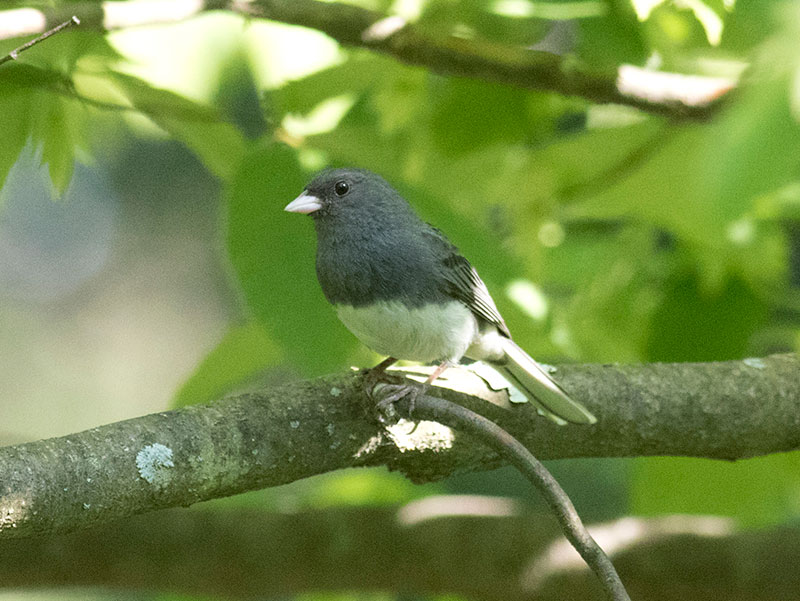A Morning Birding in the Loyalsock State Forest
6/25/17
By David Brown
On a recent morning I walked along a gated road through the Loyalsock State Forest in high elevation forested habitat at the southern end of the Allegheny Plateau. I had been to the spot a few times but never during summer and wanted to survey what birds were nesting in the area. I was particularly interested in species that primarily nest north of here but are also found locally at high elevations.
I had my binoculars, my camera, and my audio recorder. The air was cool and calm as I started but the day was going to heat up quickly so I carried plenty of water. Pennsylvania's state flower, mountain laurel, was in full bloom on both sides of the path.
Summer birding in forested areas is done almost completely by ear. As I walked I heard many expected songs. Red-eyed vireos sang their endless song from the tops of the trees. Ovenbirds sang “Teacher! Teacher! Teacher!” from the underbrush. I heard the song of a veery, a species of thrush that sounds like an alien spacecraft landing. A yellow-rumped warbler sang its two-parted trill.
After two miles the forest road ended at an area that was logged within the past few years but has begun to regenerate. A deer exclosure fence makes a two-mile loop of the perimeter that I followed.
In this open habitat I had more success seeing birds. Two male scarlet tanagers sang from the tops of the few trees that were left standing. A pair of dark-eyed juncos flew to the low branches of a tree as I passed. Juncos are common backyard birds in winter but can also be found nesting at high elevation locally. As I carefully stepped through an area of tall grass the path in front of me exploded as a half-dozen fledgling ruffed grouse flapped their tiny wings furiously into the safety of the exclosure. An adult grouse frantically gave an alarm call. I could hear chestnut-sided warblers, which prefer to nest in young growth rather than mature forest.

Dark-eyed Junco
Ahead I heard a song that I recognized but I wanted to see the bird to be sure since there are a few species that have a similar songs. I could see branches moving in a shrub adjacent to the fence, but couldn't get a solid look. I froze to prevent scaring the bird. It jumped to a branch overhanging the path, threw back its head, and sang. The lower half of the bird was blocked by leaves, but the upper breast had an unmistakeable black patch confirming it as a mourning warbler. This species is one of the rarer local warblers in summer because we are at the southern edge of its nesting range. Before I had time to raise my camera the bird had flown.
As I walked the road back to the car the day was beginning to heat up and fewer birds were singing but I had enjoyed documenting some uncommon species. There are countless similar roads through our state forests and each one has its own surprises so if you are looking for a summer adventure, pick one and see what you can find.